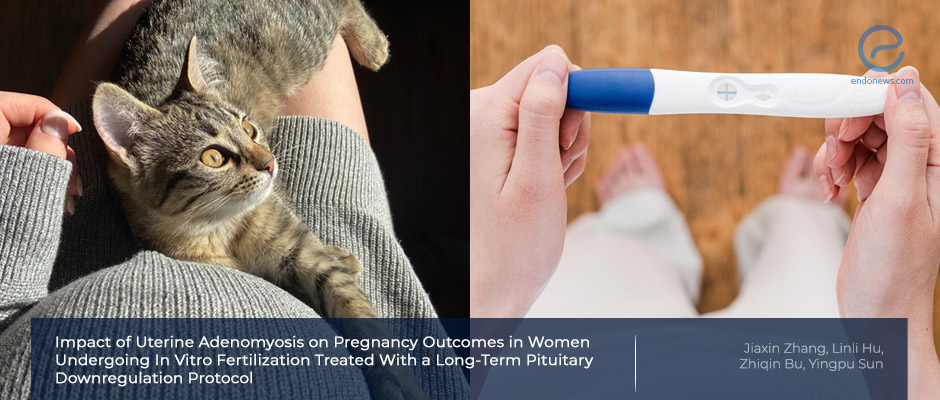How does adenomyosis affect IVF outcomes?
Dec 1, 2021
Infertile women with adenomyosis should be informed about the adverse influences of adenomyosis on pregnancy outcomes in IVF treatments.
Key Points
Highlights:
- Increased abortion rate, decreased embryo implantation and clinical pregnancy rates are observed in women with adenomyosis undergoing in vitro fertilization (IVF) treatments.
Importance:
- Even the long protocol GnRH agonist pretreatment for several cycles is used, adenomyosis still has a negative effect on pregnancy outcomes in IVF treatments.
What’s done here?
- This matched case-control study was conducted to evaluate the impact of adenomyosis on pregnancy outcomes in IVF treatments.
- Study group included patients having adenomyosis and control group included patients having laparoscopically or ultrasonographically confirmed endometriosis.
- Adenomyosis and endometriosis patients were matched by age, at a ratio of 1:4.
- Long-acting GnRH agonist treatment for 1-6 months before ovarian stimulation was performed in all participants by a well-experienced IVF team.
- Implantation rate, clinical pregnancy rate, spontaneous abortion rate and live birth rate were compared between the groups as primary outcomes.
Key results:
- A total of 259 patients met the eligibility criteria: 51 adenomyosis in study group and 208 endometriosis patients were in the control groups.
- Age, infertility reason-duration, BMI, basal FSH, number of oocytes retrieved, length of GnRH, number and quality oftransferred embryos were similar between groups.
- Adenomyosis patients had a significant higher antral follicle count (AFC) compared to endometriosis patients.
- Spontaneous abortion rate increased; while implantation, clinical pregnancy and live birth rates reduced significantly in adenomyosis patients compared with endometriosis patients.
- Adenomyosis has significant adverse effect on pregnancy outcomes in women with adenomyosis even after controlling age and the number of embryos transferred.
Limitations:
- Retrospective design and non-exclusion of pelvic endometriosis are the limitations of the study.
- There may be some misdiagnosis present as adenomyosis was diagnosed only by ultrasound.
Lay Summary
Adenomyosis is defined as the localization of endometrial tissue in the muscle layer of uterus. Several theories have been proposed to explain the reasons of adenomyosis-associated infertility including uterine dysperistalsis, abnormal transportation of sperm in the uterine cavity, and embryo implantation. In vitro fertilization (IVF) treatment, especially with the pretreatment of long-acting GnRH agonist, has been considered as the most common option to overcome infertility due to adenomyosis.
Zhang et al, from China, published a study titled “Impact of Uterine Adenomyosis on Pregnancy Outcomes in Women Undergoing In Vitro Fertilization Treated with a Long-Term Pituitary Downregulation Protocol” in the journal "Frontiers in Endocrinology". The authors aimed to assess the effect of adenomyosis on pregnancy outcomes in IVF treatments, compared with endometriosis patients. All demographic and clinical characteristics of the patients were similar, except antral follicle count (AFC), that was significantly higher in adenomyosis patients.
Pretreatment of long-acting GnRH agonist for 1-6 months before ovarian stimulation was performed in all participants by a well-experienced IVF team. Infertility reason and duration, number of oocytes retrieved, length of gonadotropin duration, number and quality of embryos transferred were comparable between groups. In adenomyosis patients, spontaneous abortion rate was higher significantly while implantation rate, clinical pregnancy rate and live birth rate were decreased.
“Even in the super long protocol with long-acting GnRH-a pretreatment for several cycles, adenomyosis still has adverse influences on the pregnancy outcome of IVF.” the authors added.
Research Source: https://pubmed.ncbi.nlm.nih.gov/34489861/
adenomyosis super long protocol IVF pregnancy outcome abortion rate implantation rate clinical pregnancy rate endometriosis

